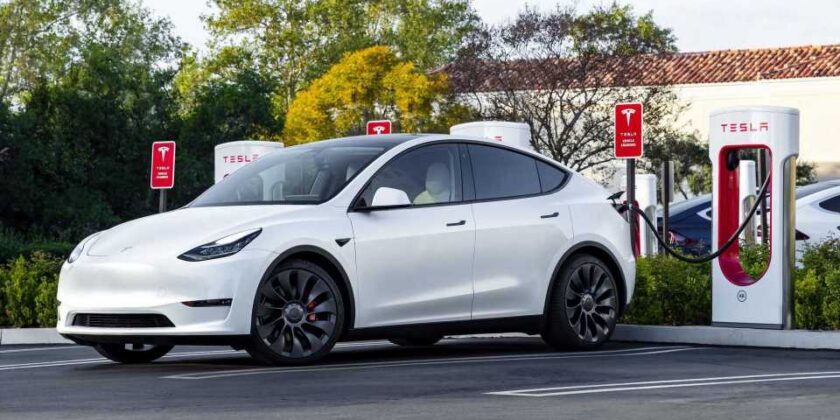This article comes to us courtesy of EVANNEX, which makes and sells aftermarket Tesla accessories. The opinions expressed therein are not necessarily our own at InsideEVs, nor have we been paid by EVANNEX to publish these articles. We find the company’s perspective as an aftermarket supplier of Tesla accessories interesting and are happy to share its content free of charge. Enjoy!
Posted on EVANNEX on April 04, 2023, by Peter McGuthrie
Charging an electric vehicle is a top concern for many prospective EV buyers, and understanding how the process works and how long it takes are both crucial. While many Tesla and EV owners do most of their charging at home, there are a handful of different kinds of chargers that are important to familiarize yourself with if you’re thinking about making the switch.
 |
Above: A Tesla Model Y (Image: Casey Murphy / EVANNEX).
As Cars.com recently pointed out, the length of time it takes to charge an EV depends heavily on the type of equipment you’re working with, among other factors. Charging times can vary significantly due to things like the temperature, your car, and what type of charger you’re using — whether Level 1 or Level 2 chargers, or DC Fast-Charging chargers such as Tesla’s Supercharger network.
It’s also important to note that charging to 100% is rarely ever advised, so many of the charging times will instead look at charging from 0 to 80% or 10 to 80% charge ranges. Above 80%, charging slows down significantly, and it could take several hours to complete the last 20%. Additionally, keeping the battery charged to 100% can be hard on the battery long term.
Below we’ve listed a few details about the different types of EV charging options, in order from quickest to slowest charging speeds.
Tesla’s Superchargers and other DC Fast-Charging: 15 Minutes-1 Hour
The fastest types of chargers that are currently available are called DC Fast-Chargers, and these include Tesla’s Superchargers, along with some stations from Electrify America, EVgo and ChargePoint. Tesla’s Supercharger network is the most well-established fast-charging network currently out there, with over 40,000 worldwide. They also offer charging rates of up to 250kW and are often dubbed “V3” Superchargers.
With Tesla’s Superchargers — and with the use of battery preconditioning — you can expect to charge to about 200 miles of range in roughly 15 minutes. Cars.com also tested a Hyundai Ioniq 5 from 18 to 80% in 18 minutes using a 350kW DC fast charger. This, of course, depends on the optimal battery and ambient temperatures, but it’s a great option for road trips.
While they used to be open only to Tesla’s EVs, select locations in the U.S., Europe and beyond have begun opening to non-Tesla brands. We’re likely to see the number of stations open to all brands growing over the next several years.
Level 2 Charging/Home Charging: 4-15 Hours
Level 2 charging is a great option for home charging, with charging times ranging from 4 to 15 hours. As such, most home charging equipment owners simply charge their EVs overnight and have them ready for the morning commute each day.
In tests detailed by Cars.com, it took about an hour to add 46 miles of range to a Tesla Model Y, and about 38 and 33 miles an hour for the Hyundai Ioniq 5 and Kia EV6, respectively.
You can also find Level 2 chargers on the road if you need to simply restore a few miles of range on a road trip, though they’re less ideal than finding a DC charger. Because of these slower charging speeds, fully charging an EV with Level 2 is most suitable for home charging, as it could take as much as 8 to 15 hours in a single session.
Level 1 Charging: 40+ Hours
Level 1 charging, comparable to a standard 12–volt home electrical outlet, is best only used as a last resort since it can only deliver up to 5 miles of range per hour. It can come in handy in a real pinch, but it just may take a while. As a result, it’s recommended that those buying home charging equipment go ahead and install Level 2 hardware.
Source: Read Full Article
